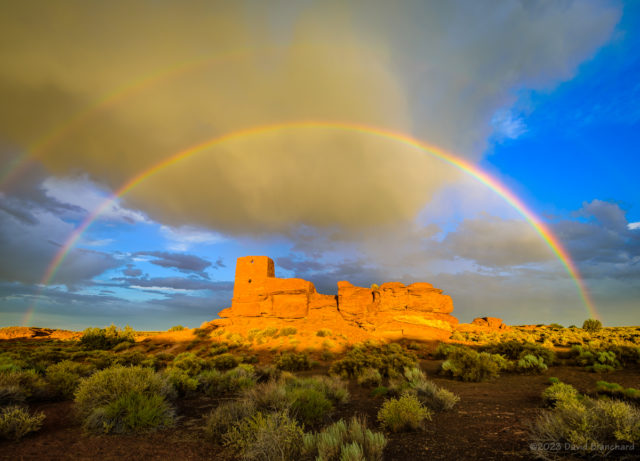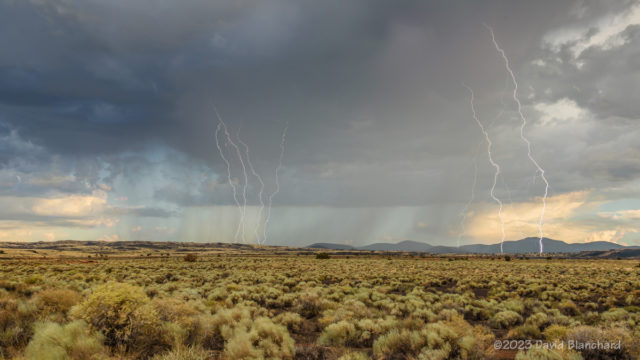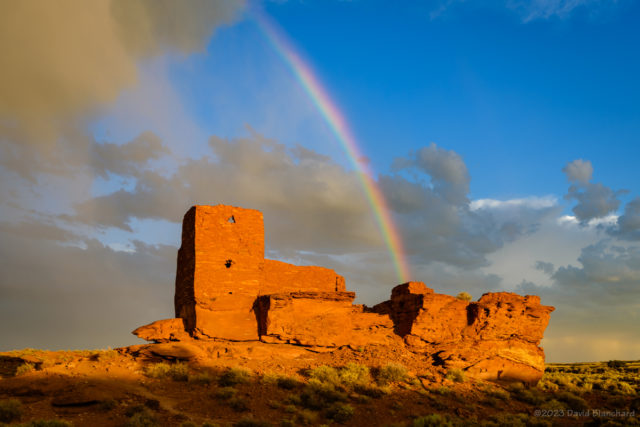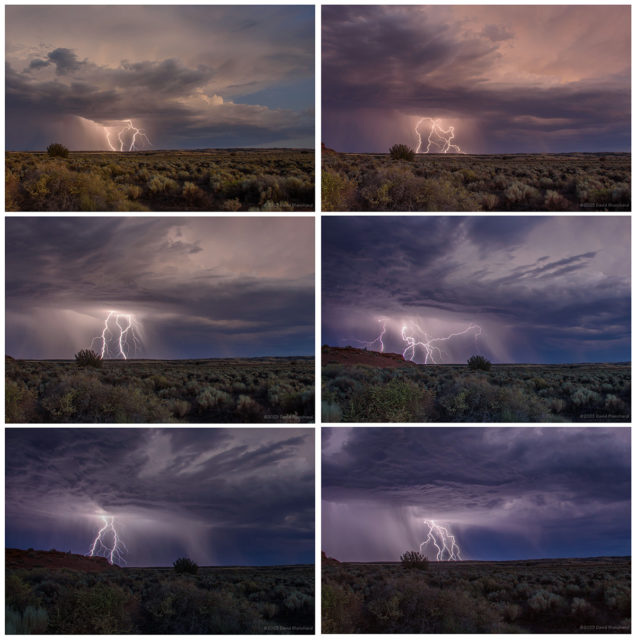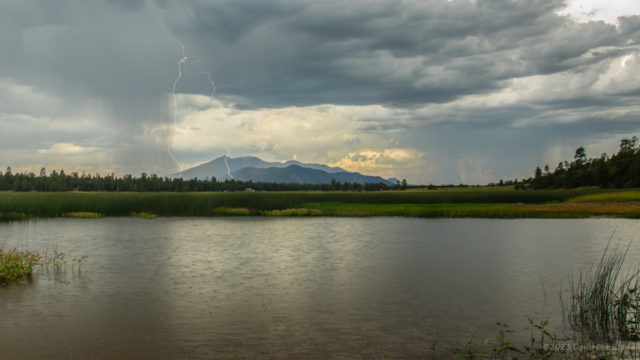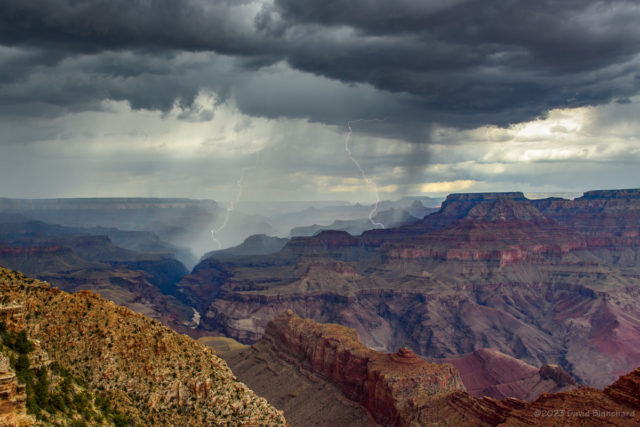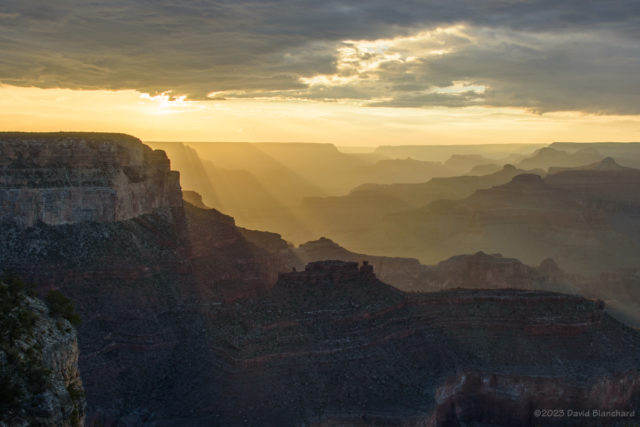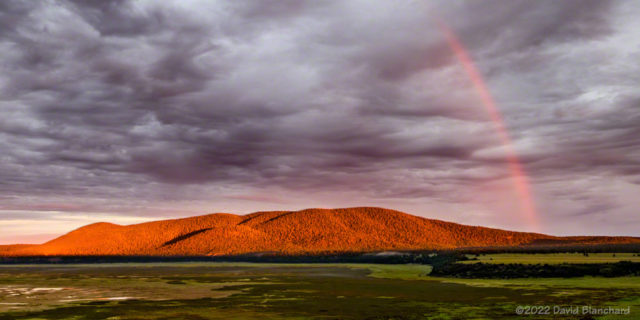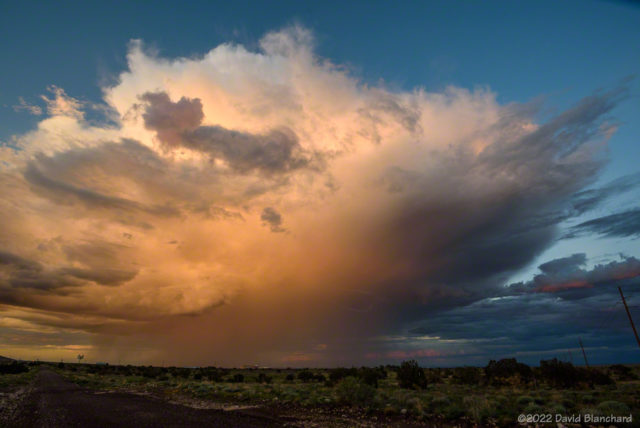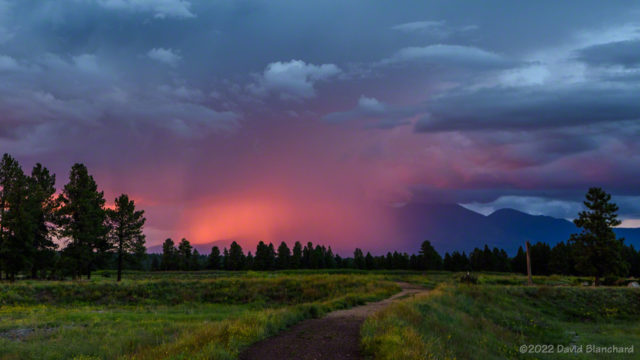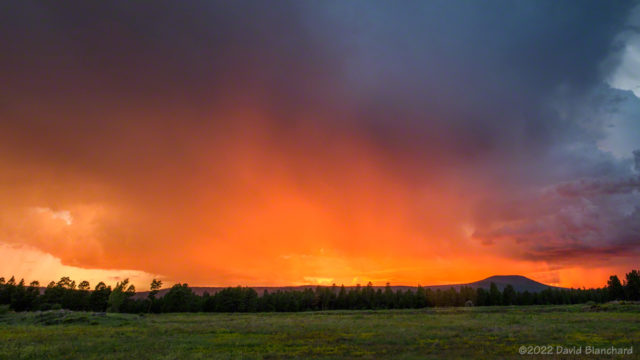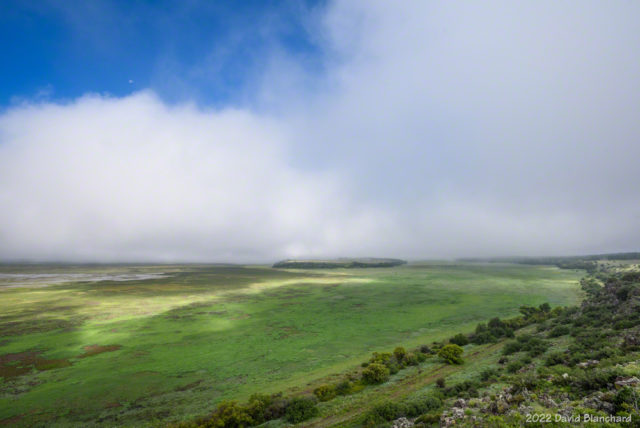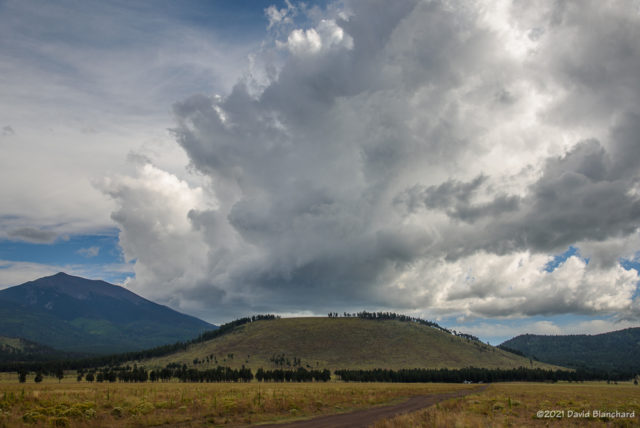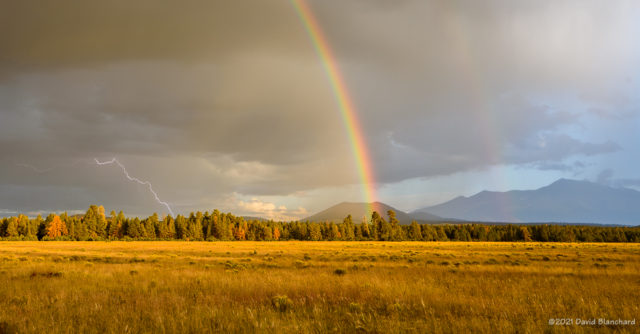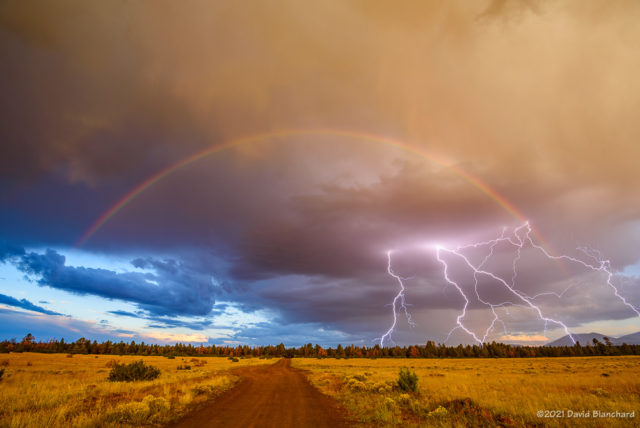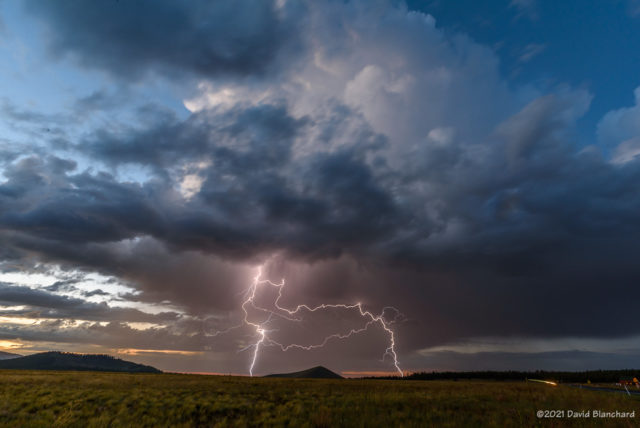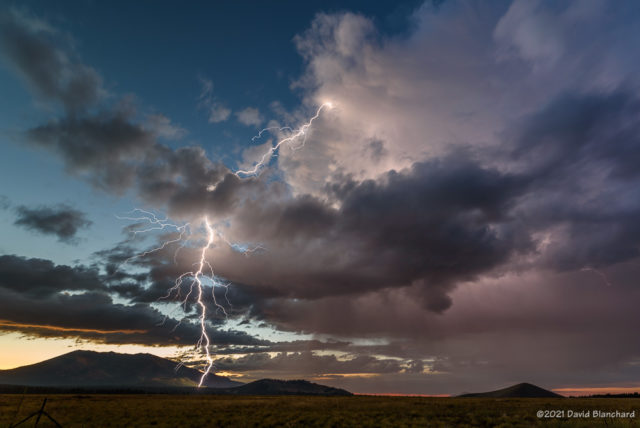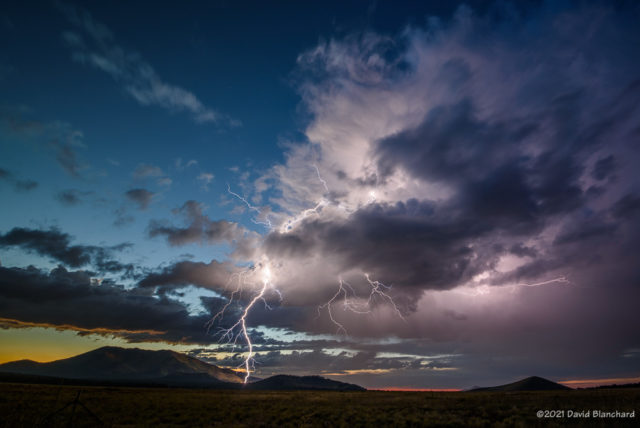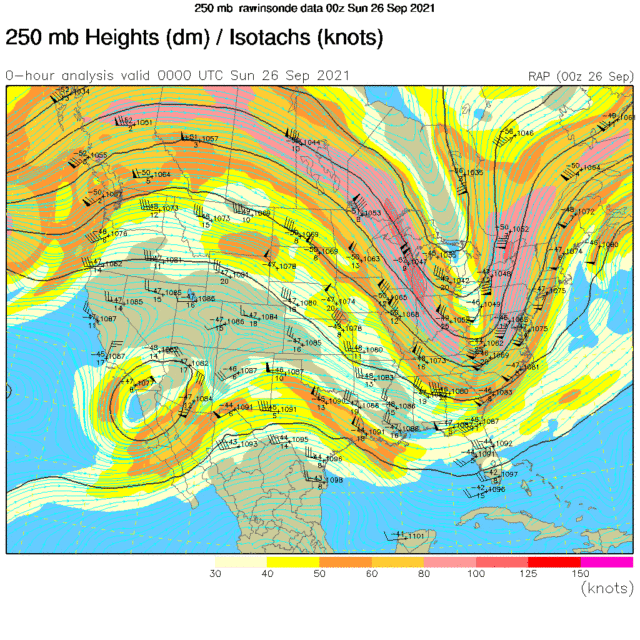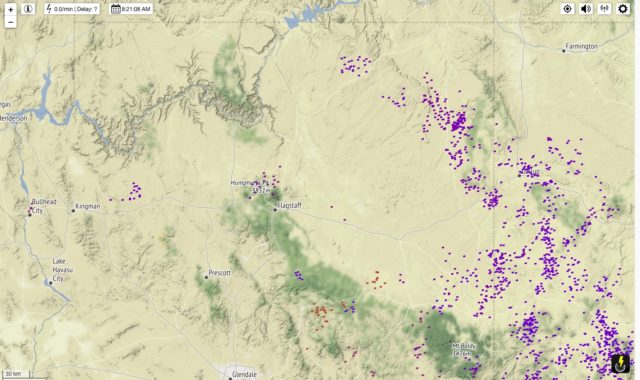After an early start to the monsoon in late June, the monsoon went on an extended break. For much of July, high pressure remained to our west resulting in northwest to northeast flow across the region. Consequently, tropical moisture had to take the long route over the eastern Pacific Ocean, across the Pacific Northwest, then southward across the High Plains and Rocky Mountains. By the time it arrived, much of the moisture had been depleted, especially in the lower levels. The resulting storms were generally weak and produced little rain, and even less lightning.
Here is a summary of what I did manage to photograph during that period.
11 July 2024
Weak storms produced little in the way of rain but did result in a nice sunset.

15 July 2024
A few strong storms formed on the north side of the San Francisco Peaks and I positioned myself at the entry to Wupatki National Monument. There was very little lightning but I did get this photograph that shows the landing point of the bolt. I also got power poles.

16 July 2024
Radar indicated some storms south of Mormon Lake–a favorite spot for shooting storms because of its expansive views. This storm produced only a few visible bolts of lightning but I did manage to capture this one–along with the waxing gibbous Moon.

21 July 2024
While taking a short hike to Alfa Fia Tank near Snowbowl and the San Francisco Peaks I was happy to see some convection developing that had nice reflections in the water. Look closely and you will also see the ducks.

23 July 2024
I was confident that Grand Canyon would produce good storms with possibilities for lightning and rainbows. It didn’t. The best I could do was shoot this ultra-wide view of the clouds using a 12mm fisheye lens.

24 July 2024
The next day in Sedona was a bit better. Although there was some lightning I managed to miss it all because it was never in the direction that the camera was pointed. Look carefully in the upper left corner of this image and you can just barely see a few filaments of the lightning stroke which occurred to the left of the camera. I should have shot this with a wider field of view. On the other hand, the sunset was pretty good.



26 July 2024
A few days later I tried something different and concentrated on getting the very early stages of convective development over the San Francisco Peaks. A bonus was catching the reflections of the clouds in Marshall Lake. By the time I left there was lightning and I was able to capture a few bolts.



Time-lapse of convection developing over the San Francisco Peaks (200x speed).
While shooting these still images I had another camera capturing time-lapse video. It’s always fun to see the development of clouds in time lapse.
26 July 2024
This was a last-minute decision as the radar showed storms developing west of Flagstaff. I drove to Mormon Lake hoping for sunsets, rainbows, and lightning. Two out of three isn’t bad.





This storm was located over Grand Canyon and was producing lightning bolts into the canyon. I wish I had been there instead.
How hot was July, anyway?
July 2024 was the second hottest July on record. Only July 2023 was hotter.



Total rainfall for the month was below average but not anywhere near record territory. Thank goodness for that!






